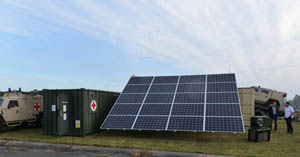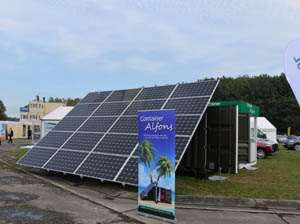Opening Times: Sat - Thu 8.00 - 18.00
RENEWABLE ENERGY AND ALTERNATE ENERGY SOURCES
Renewable energy is sustainable as it originates from sources that are inexhaustible (unlike fossil fuels). Sources of renewable energy include wind, solar, biomass, geothermal and hydro, all of which occur naturally.



Renewable Energy Target (RET)
Increasingly, governments around the world are turning to renewable energy to end our dependence on fossil fuels. In 2001, the Australian Government introduced a Mandatory Renewable Energy Target (MRET) program with the goal of increasing uptake of renewable energy in Australia’s electricity supply. By 2007, the Government committed to ensuring that 20 per cent of Australia’s electricity supply comes from renewable energy sources by 2020. In December 2008, the Australian Government and the Council of Australian Governments (COAG) released for public consultation draft legislation for an expanded Renewable Energy Target (RET). This will bring the MRET and existing and proposed state and territory targets into a single national RET scheme. February 2010 saw the Rudd Government announce proposals that from 1 January 2011, the RET will include two parts: the Small-scale Renewable Energy Scheme (SRES) and the Large-scale Renewable Energy Target (LRET). The SRES applies to small-scale technologies such as residential solar power and solar hot water systems and is supported by the Renewable Energy Certificate (REC) system. The SRES is currently without a cap. The LRET covers large-scale renewable energy projects such as wind and solar farms and includes a target of 41,000 gigawatt-hours of renewables-based generation in that year. After last minute amendments, legislation for the enhanced Renewable Energy Target (eRET), passed on June 24, 2010. In 2015, new legislation was passed, reducing the LRET from 41,000 GWh to 33,000 GWh by 2020.
Solar power
Solar power is clean green electricity sourced from sunlight. Or in some cases, from heat from the sun. Installing solar power systems in a residential setting generally means setting up a solar photovoltaic or a solar thermal system on the roof. Definition of photovoltaic: Photo = “light” and photons = energy particles coming from sunlight; voltaic = producing a voltage or volts. Abbreviation = PV Solar energy is a renewable free source of energy that is sustainable and totally inexhaustible, unlike fossil fuels that are finite. It is also a non-polluting source of energy and it does not emit any greenhouse gases when producing electricity. Solar electricity can supplement your entire or partial energy consumption. Using solar power means reducing your energy bills and saving money. Low maintenance and unobtrusive, installing solar panels adds value to your home.
SOLAR POWER SYSTEMS – CLEAN, CHEAP ELECTRICITY
The installation of solar energy is the cleanest and greenest source of renewable energy generated electricity available. It can help power your home, business or community building. Nowadays, it is the cheapest too! When you install solar power systems, you’ll not only slash your carbon emissions and your electricity bill costs, you’ll be joining Australia’s clean energy revolution.
